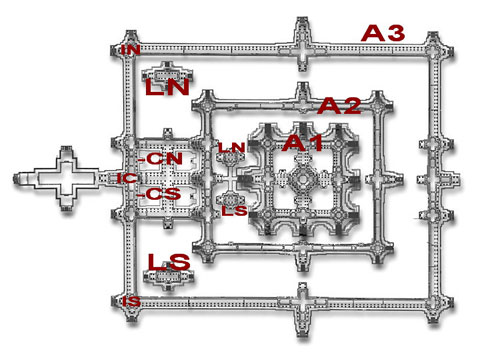
Angkor Wat Devata Inventory – Ver. 05-30-2013
The Hindu temple of Angkor Wat enshrines nearly 2000 portraits of ancient Khmer women documented here in the Angkor Wat Devata Inventory.
The Khmer civilization that grew to unify most of Southeast Asia between the 8th-14th centuries respected women. Today, we still see their temples filled with images of sacred women –termed devata, apsara or Khmer goddesses – who embody the feminine forces of the universe. While women and goddesses appear as icons in many ancient and modern societies, the Khmers gave sanctified women dominance over their state temples more consistently and more visibly than any other group.

The Hindu temple of Angkor Wat enshrines nearly 2000 portraits of ancient Khmer women documented here in the Angkor Wat Devata Inventory.
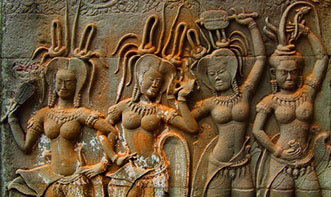
The Khmer civilization that grew to unify most of Southeast Asia between the 8th-14th centuries respected women. Today, we still see their temples filled with images of sacred women –termed devata, apsara or Khmer goddesses – who embody the feminine forces of the universe. While women and goddesses appear as icons in many ancient and modern societies, the Khmers gave sanctified women dominance over their state temples more consistently and more visibly than any other group.
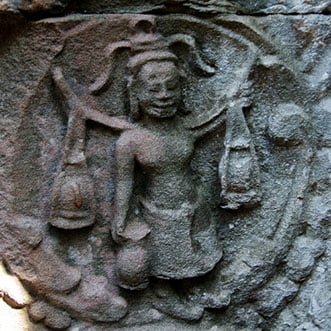
Hidden in the ancient jungle temple of Preah Khan at Angkor, images carved on a door may be proof of a Khmer legends like Aesop’s fables.
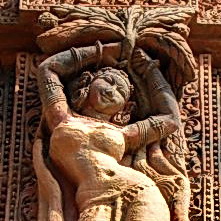
Set like a gem among fertile ricefields, the 11th century Rajarani Temple is a breathtaking example of of Orissan style. It is also an immediate architectural predecessor of the Khmer Empire’s greatest monuments.
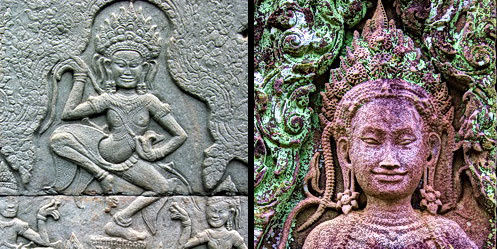
On the towers above, serene faces gaze out over the jungle. But below, Jayavarman VII followed the example of King Suryavarman II by filling his monument with female energy. The portraits of sacred women, now called devata or apsaras depending on their style, surround the Bayon.
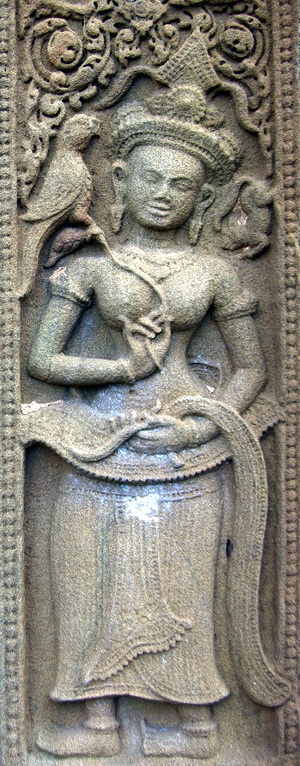
Just one hundred miles to the south, the Khmer civilization sanctified thousands of female images on the walls of their most important temples, both Hindu and Buddhist. But here, in what is now modern day Thailand, only two devata remain, fulfilling a mysterious spiritual mission long since forgotten.
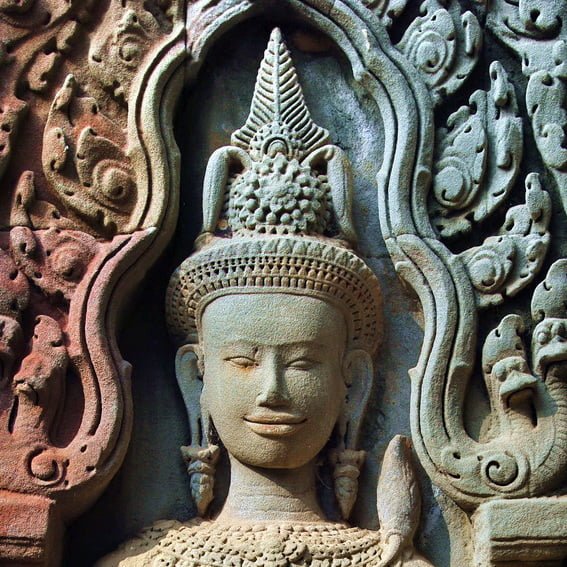
The small, elegant Khmer temple of Thommanon is located just outside the Gate of Victory that gives access to the ancient walled city of Angkor Thom from the east. Directly to its south is the small temple of Chau Say Tevoda, currently under restoration.
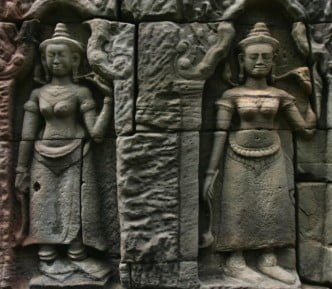
Like most Khmer temples, Ta Som is filled with standing female images called devata (or tevoda, tevada), and flying or dancing female divinities called apsara (or apsarases, apsaras). Ta Som temple devata goddesses depict Sacred Khmer women in Cambodia

Cambodia’s great kings filled entire temples with sanctified images of women. Why do female images at Preah Khan dominate this extraordinary ancient temple? Khmer devata goddesses in the heart of Preah Khan temple
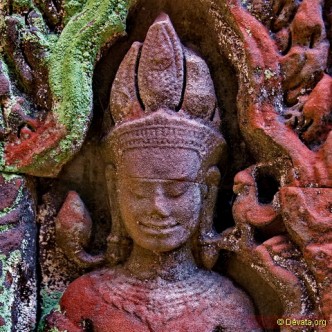
Sacred images of Khmer women still dominate and protect the temple with their auspicious presence. Many stand hidden in shadowed alcoves, seen by few visitors. Preah Khan Khmer temple devata goddesses